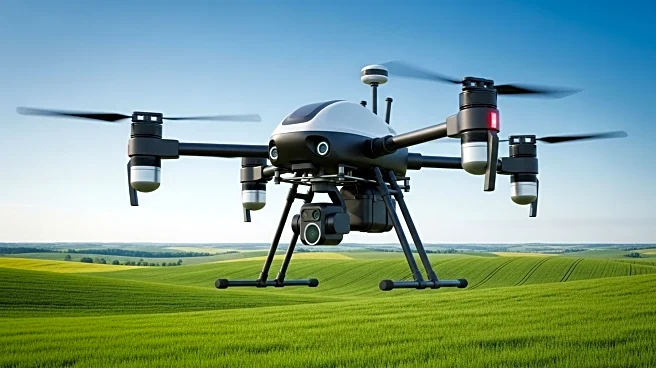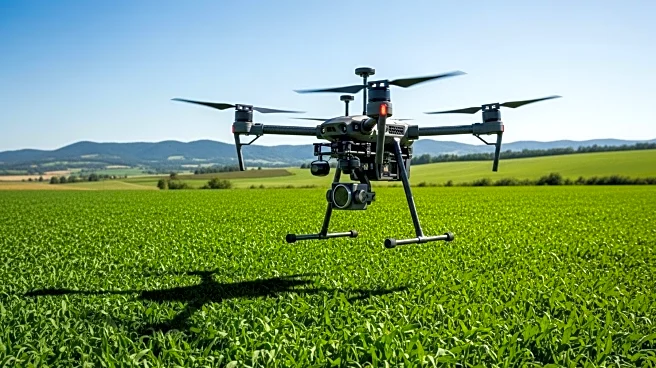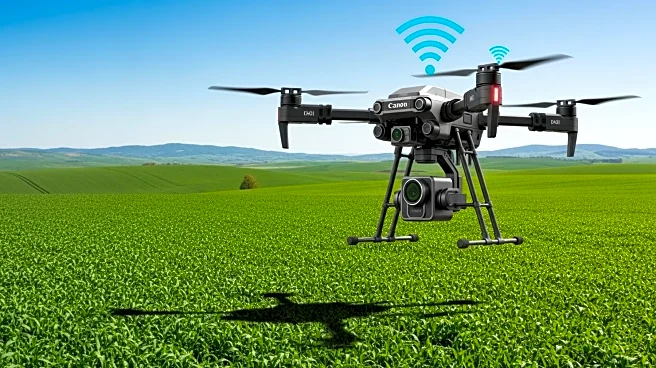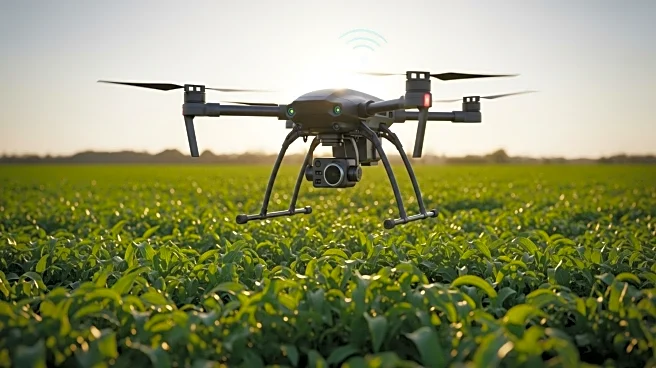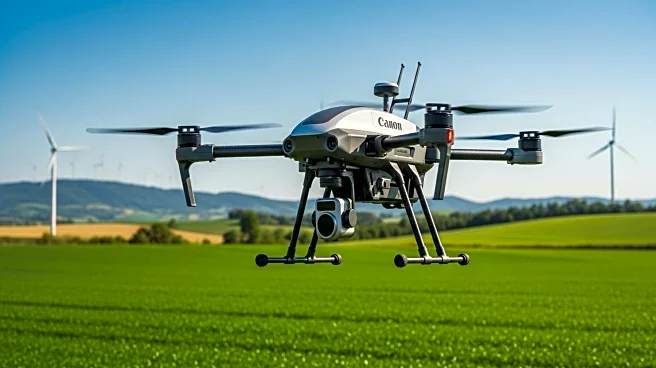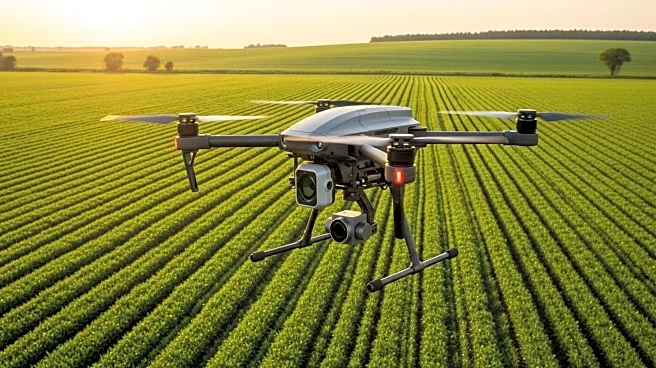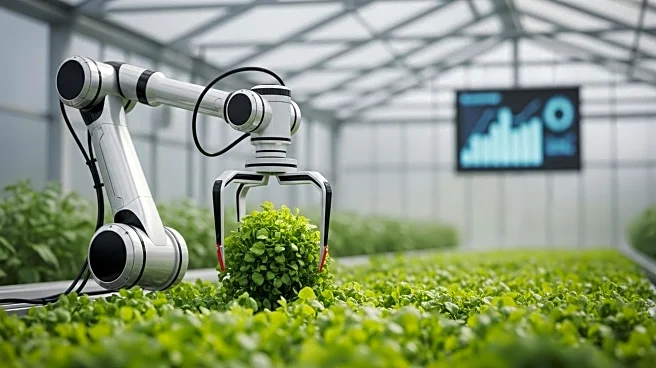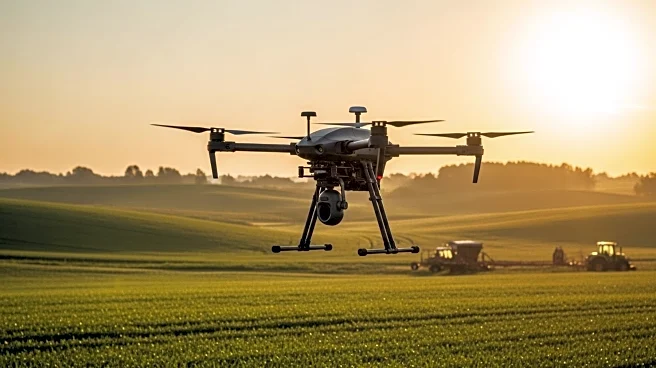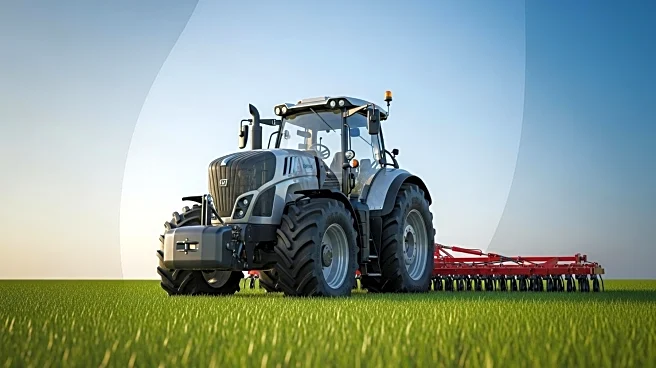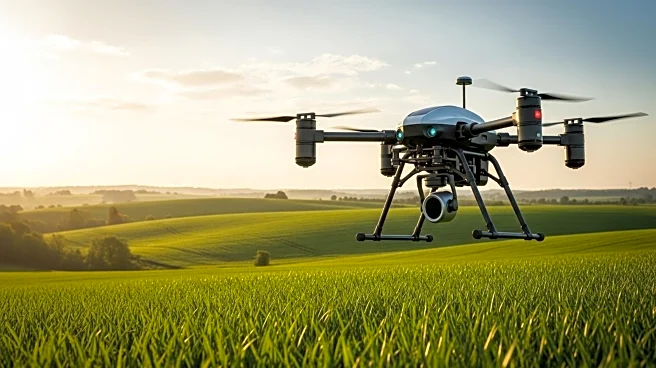What's Happening?
The precision agriculture market is experiencing significant growth, with projections indicating an increase from USD 10.3 billion in 2023 to USD 35.6 billion by 2033, at a compound annual growth rate (CAGR) of 13.20%. This growth is largely driven by advancements in technology and increased demand for efficient farming practices. Precision agriculture, which involves site-specific crop management and the use of technology to optimize farming processes, is gaining traction globally. Key components of this market include automation and control systems, sensing and monitoring devices, and farm management systems. The hardware segment, comprising GPS receivers, sensors, drones, and automated machinery, is expected to hold the largest market share. North America is projected to lead the market due to established agricultural machinery manufacturers and favorable government policies, while Asia-Pacific is anticipated to grow at the fastest rate due to modernization efforts in agriculture.
Why It's Important?
The expansion of the precision agriculture market is crucial for addressing global food security challenges and enhancing agricultural productivity. By leveraging technology, farmers can optimize resource use, reduce environmental impact, and increase crop yields. This growth is particularly important in regions facing population pressures and climate change impacts, as precision agriculture offers solutions for sustainable farming practices. The market's expansion also presents opportunities for technology providers and agricultural machinery manufacturers to innovate and develop new products, potentially leading to increased economic activity and job creation in the sector. However, the high cost of precision agriculture technology remains a barrier for widespread adoption, particularly in developing countries.
What's Next?
As the precision agriculture market continues to grow, stakeholders are likely to focus on reducing technology costs to facilitate broader adoption. Companies may invest in research and development to create more affordable solutions, while governments could implement policies to support farmers in adopting precision agriculture practices. Additionally, collaborations between technology providers and agricultural firms may lead to the development of integrated systems that further enhance farming efficiency. The ongoing modernization of agriculture in Asia-Pacific countries suggests continued market growth, with potential for increased investment in precision farming equipment and technologies.
Beyond the Headlines
The rise of precision agriculture also raises ethical and cultural considerations, particularly regarding data privacy and the impact of technology on traditional farming practices. As farmers increasingly rely on data-driven solutions, concerns about data ownership and security may emerge. Furthermore, the shift towards technology-intensive farming could alter rural communities and traditional agricultural methods, necessitating careful management to ensure cultural preservation and equitable access to technological advancements.
